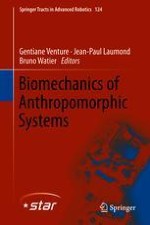2019 | OriginalPaper | Buchkapitel
From Biomechanics to Robotics
verfasst von : Galo Maldonado, Philippe Souères, Bruno Watier
Erschienen in: Biomechanics of Anthropomorphic Systems
Aktivieren Sie unsere intelligente Suche, um passende Fachinhalte oder Patente zu finden.
Wählen Sie Textabschnitte aus um mit Künstlicher Intelligenz passenden Patente zu finden. powered by
Markieren Sie Textabschnitte, um KI-gestützt weitere passende Inhalte zu finden. powered by
